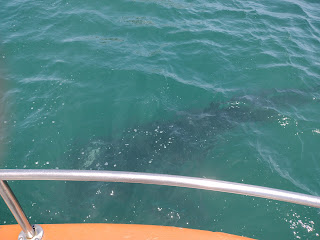The End of a Great Trip

Our week in Puerto Penasco has come to an end, but what a week it was! We started the week with some surveys of intertidal habitats and tidepools, with each habitat having a unique community. We found a myriad of organisms at the sandy shore with rocky reef behind CEDO, including octopus, crabs, fish, sea urchins, sea stars, snails, and lots of sea hares. The rocky shore behind Vina del Mar also had a high abundance of organisms, including apricot sea slugs, nudibranchs, brittle stars, snapping shrimp, octopus, sea cucumbers, and crabs. The students enjoyed all of the habitats we visited, but I have a feeling the Cholla Bay mud/sandflat may have been their favorite. It had considerably less hard substrate, but the animals took advantage of the hiding places that were there. We found a lot of crabs, octopus, clams, and hermit crabs, and even some penaeid shrimp, gorgonians, and a flounder. The sandy shore and rocky reef habitat behind CEDO. Students tidepooling at the rocky shore ha













